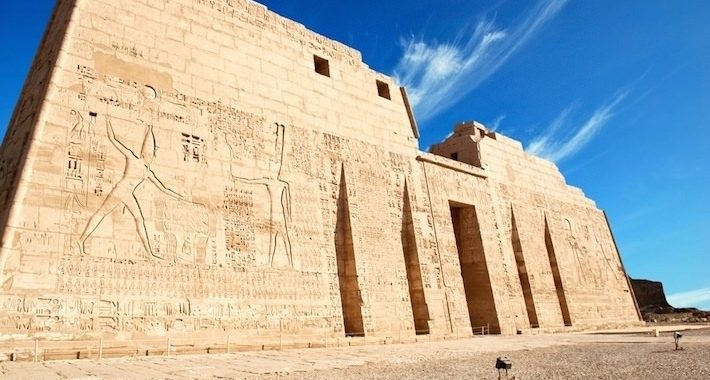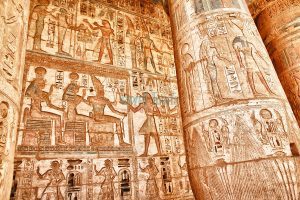
Medinet Habu Luxor: 5 Fascinating Facts to Discover
When visiting Luxor, Egypt, one of the most captivating sites to explore is Medinet Habu Luxor. This ancient temple complex, located on the west bank of the Nile, offers a unique glimpse into the grandeur and history of ancient Egyptian civilization. While often overshadowed by more famous sites like the Valley of the Kings and Karnak Temple, Medinet Habu Luxor stands out for its remarkable preservation and the rich stories etched into its walls
A Glimpse into History
Medinet Habu Luxor is best known for the Mortuary Temple of Ramesses III, one of the most well-preserved temples in Egypt. Constructed during the 20th Dynasty, around 1186-1155 BCE, this temple served as a place of worship and a fortress. Ramesses III, often regarded as the last great pharaoh of the New Kingdom, built this temple to commemorate his reign and to serve as a center for religious and administrative activities.
The site of Medinet Habu Luxor, however, has a history that predates Ramesses III. It was originally associated with the god Amun and was considered a sacred site long before the construction of the temple. Over the centuries, it has been a focal point for various religious and cultural activities, making it a rich tapestry of history and tradition.
Architectural Wonders
The Great Temple of Ramesses III
The centerpiece of Medinet Habu Luxor is undoubtedly the Mortuary Temple of Ramesses III. This massive structure is a testament to the architectural prowess of ancient Egyptians. As you approach the temple, you’ll be greeted by the imposing First Pylon, adorned with intricate carvings depicting the pharaoh’s military victories and religious rituals.
Beyond the pylon lies the expansive Courtyard, flanked by towering columns and statues of Ramesses III. The walls of the temple are covered with detailed reliefs that narrate the pharaoh’s achievements, including his battles against the Sea Peoples, a confederation of naval raiders who threatened Egypt during his reign.
The Hypostyle Hall
One of the most striking features of Medinet Habu Luxor is the Hypostyle Hall, a grand space filled with massive columns that once supported a roof. The columns are intricately decorated with hieroglyphs and scenes depicting religious ceremonies. Walking through this hall, you can almost feel the weight of history and the reverence with which the ancient Egyptians approached their gods.
The Sacred Lake
Adjacent to the temple complex is the Sacred Lake, a feature common in many Egyptian temples. This man-made lake was used for ritual purification and religious ceremonies. It adds a serene and reflective quality to the site, offering a glimpse into the spiritual life of ancient Egypt.
Art and Symbolism
The walls of Medinet Habu Luxor are a canvas of ancient art, filled with vibrant colors and intricate details that have survived millennia. The reliefs and carvings are not just decorative; they are rich in symbolism and storytelling.
Depictions of Divine Power
Throughout the temple, you’ll find numerous depictions of Ramesses III in the company of gods like Amun, Ra, and Osiris. These images were meant to convey the pharaoh’s divine right to rule and his close relationship with the gods. The artistry is both awe-inspiring and informative, providing insights into the religious beliefs and political propaganda of the time.
Scenes of Daily Life
In addition to religious and military scenes, the walls of Medinet Habu Luxor also depict aspects of daily life in ancient Egypt. From agricultural activities to crafts and trades, these images offer a window into the everyday experiences of the people who lived during Ramesses III’s reign.
Historical Significance
Medinet Habu Luxor is not just an architectural wonder; it is a historical treasure trove that provides valuable insights into the New Kingdom period of ancient Egypt. The temple’s inscriptions and reliefs are crucial sources of information for historians and archaeologists, shedding light on the political, social, and economic aspects of the time.
The Battle Against the Sea Peoples
One of the most significant historical events depicted at Medinet Habu Luxor is Ramesses III’s battle against the Sea Peoples. These reliefs are among the most detailed accounts of this mysterious group, providing evidence of their impact on the ancient world and Ramesses III’s efforts to defend Egypt from their incursions.
The Decline of the New Kingdom
Medinet Habu Luxor also offers clues about the decline of the New Kingdom. Despite Ramesses III’s successes, his reign marked the beginning of a period of instability and decline for Egypt. The temple’s records, including economic documents and administrative texts, help historians piece together the challenges faced by the pharaohs who followed.
Visiting Medinet Habu Luxor Today
For modern visitors, Medinet Habu Luxor is a must-see destination that offers a more intimate and less crowded experience compared to other sites in Luxor. As you wander through the temple complex, you’ll have the opportunity to explore its many chambers and courtyards at your own pace, taking in the stunning artistry and absorbing the stories of ancient Egypt.
Tips for Your Visit
- Timing: Visit early in the morning or late in the afternoon to avoid the heat and enjoy a quieter experience.
- Guided Tours: Consider hiring a knowledgeable guide who can provide deeper insights into the history and significance of the site.
- Photography: Don’t forget your camera! The vibrant colors and intricate details of the reliefs make for stunning photographs.
Conclusion
Medinet Habu Luxor is a remarkable testament to the grandeur and complexity of ancient Egyptian civilization. From its awe-inspiring architecture to its rich historical narratives, the site offers a unique and immersive experience for anyone interested in history, art, or culture. Whether you’re a seasoned traveler or a curious explorer, a visit to Medinet Habu Luxor is sure to leave you with a deeper appreciation for the wonders of ancient Egypt.
